
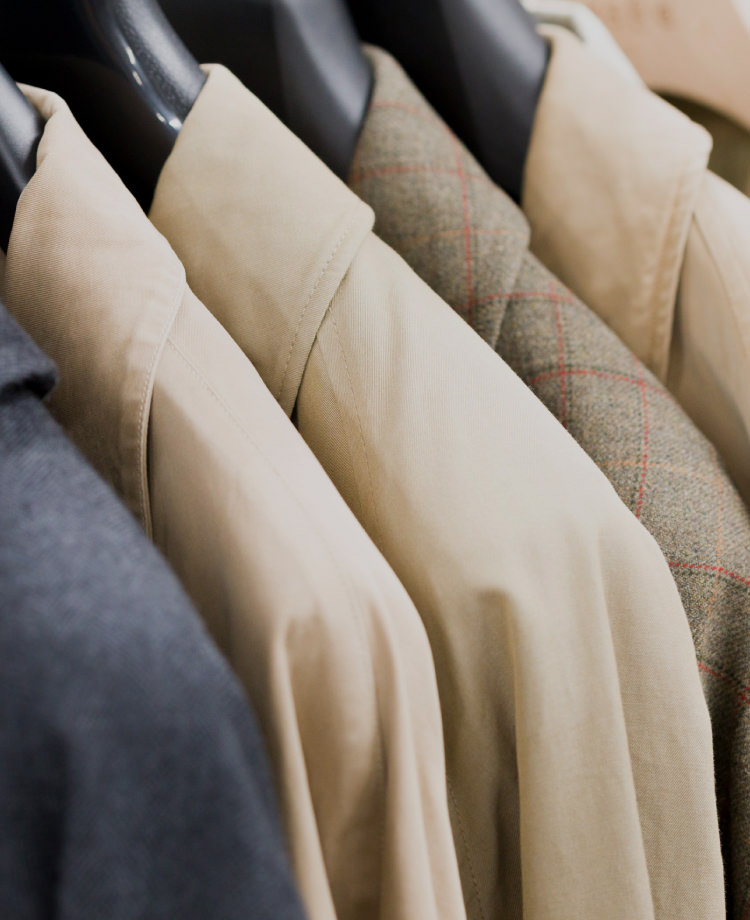
Balmacaan Coat
Shinsuke Kojima
from KAPTAIN SUNSHINE
2018.11.05


VOL.06
Find out little-known yet interesting facts about clothing through the words of discerning designers who have been creating
essential masterpieces for BEAMS PLUS collections.
The crucial new philosophy of BEAMS PLUS,
“Updating timeless classics for the future,” cannot be achieved without their wealth of knowledge.
vol.06
Balmacaan Coat
Shinsuke Kojima
from KAPTAIN SUNSHINE

Shinsuke Kojima (Director of KAPTAIN SUNSHINE)Born in Hyogo in 1976, Kojima started his career as an apparel designer after working for a fashion magazine as an editor. With 10-year experience in the industry, he established his own brand KAPTAIN SUNSHINE in 2013. The modern and unique collections of clothing he has designed with respect for traditional Euro-American men’s garments are made by skillful artisans in Japan with the brand’s exclusive textiles provided by reliable manufacturers. Kojima’s design is generated through his detailed knowledge of vintage garments and sharp insight, along with his exceptional fashion taste and ability to beautifully integrate such different elements into a piece of clothes.
http://kaptainsunshine.jp
A balmacaan was originally made
as luxury outerwear.Despite the simple look,
the classical piece is well
designed in detail.

We call it a ‘stand collar coat’ in Japan,
but it’s not the right name.
“A balmacaan has its origin in Northern Scotland and we call it a ‘stand collar coat’ in Japan. Although the collar designs of the two coats are slightly different, those look quite similar with a convertible stand-fall collar that can be worn both opened and buttoned at the neck. Most of the people in Japan therefore think that one same garment has two different names.”
“The design was originally derived from rain capes that had been widely worn since around the 1850s. The cape normally featured raglan sleeves for more mobility and a fly-front closure to prevent rain and wind from entering, and was made with cotton gabardine, a traditional textile that had been used for rainwear since the 19th century.”
“Now a balmacaan is one of the most popular outerwear, but it had initially been regarded as rainwear for wealthy men such as political/business executives and Ivy League students until around the time when the coat became gradually recognized in the U.S. in the 1940s after being introduced by its birthplace, Scotland. I think rainwear itself was made only for affluent people, because average people in the country was wearing rubber-coated outerwear, fisherman coats or labor coats.”

As balmacaans became widely known among
wealthy people in the U.S. in the 1930s-1940s,
advertisements for the garment
began to appear on some magazines.


This advertisement on now-defunct Alligator magazine shows
that the garment was treated as rainwear at that time.
“While researching vintage products, I found out that the coats made around the time were carefully crafted with a lot of attention. It might take a lot of time and money to make each piece because it looks just like a made-to-order product. This also shows that the garment was designed for those who have money. In addition, some of those coats carry tags with two different names on each. One of which shows the name of a brand or maker, while another is for a store that carried the item. Most of the brands and stores shown on those tags are luxury ones, including Abercrombie & Fitch, J.PRESS and BARNEYS NEW YORK. So, the garment’s advertisements were not featured on ordinary mail order catalogs, but on some prestigious magazines.”
“The coat became even more popular in the1950s as some American manufacturers made the made-to-order piece available with volume production and affordable for everyone. Balmacaans then came to be featured more frequently and vividly on magazines and catalogs. The manufacturers launched new functional materials for the garment one after the other, aggressively calling attention to their newly developed products featuring ‘an excellent waterproof property,’ ‘quality gabardine’ or ‘exclusive fabric,’ as if to compete with a famous English fabric, Ventile. Balmacaan coats were then introduced to Japan in the 1960s as one of the staples of Ivy League students, and smart young people of the time spread it across the nation. After products made by BURBERRY, one of the representative manufacturers of the coat, came to be officially imported to Japan in 1965 and their licensed products also began to be sold in 1970, balmacaans became even more widely known in the country. Looking at the back issues of Men’s Club magazine from the 1970s, I can find articles featuring the garment in almost every issue.”


Abercrombie & Fitch’s balmacaan coat made by BURBERRY.


This balmacaan made probably in the 1950s by AQUATOGS is from Kojima’s personal collection. It is rare to use the same fabric for the lining as the exterior like this piece. The outer fabric and the lining are not firmly attached together, but connected each other with fabric tapes to prevent fabric shrinkage and the coat from getting out of shape. Such a detail shows the fact that the garment was originally made as a highly elaborate piece of clothes.


The design is simple and universal,
yet with unique details
that symbolize
the time and place it was made.
“As long as I’ve researched my own collection of vintage balmacaans, many of the ones made in the U.K., the birthplace of the garment and the center of tailoring, are simply designed yet highly elaborated in detail. For example, some of those feature pass-through pockets that allow the wearer to directly access to the pocket of a jacket worn under the coat, or footbelts attached on the hem to prevent it from flapping during a motorcycle ride. On the other hand, the design of the U.S.-made coats is more efficient and practical. Balmacaan’s signature slash hand warmer pockets on the waist are changed to patch pockets directly sewn on the front on some American-made products, while other ones feature extra details such as change pockets to store coins and cigarettes. There are even reversible ones made with cotton gabardine on the front and Harris Tweed on the back. It’s interesting that each coat uniquely reflects the national character.”


A U.S.-made balmacaan from Alligator features
patch pockets along with an extra change pocket.
“My favorite in my vintage balmacaan collection is the ones made by BURBERRY. The earlier pieces are not lined with their signature Vintage check fabric and feature one-piece sleeves. The brand later made models with two-piece sleeves, while some of their balmacaans made in the 1950s have set-in sleeves. In the 1970s, their coats were often made with easy-to-care, water resistant poly blend fabrics, while the design became slimmer and more stylish. I personally prefer the 100-percent-cotton texture and the A-line shape of BURBERRY’s balmacaans made in the 1960s, because the design reminds me of rainwear, the origin of the garment. The fashion from the 1940s to the 1960s is one of the core elements of BEAMS+ (BEAMS PLUS), and I also like clothes made in the period most because many of those are lavishly elaborated. BURBERRY has been designing various types of balmacaans according to the time and the client’s requirements, although the base of the design always looks simple.”

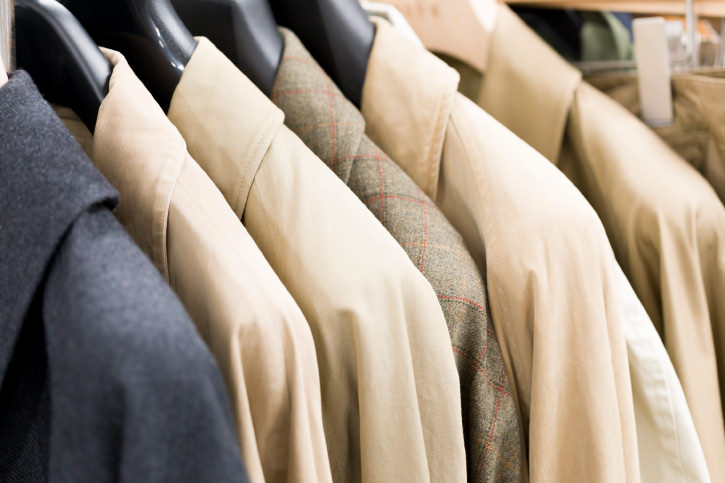
“I’m interested in such subtle differences in the details and fabrics just because I’m a designer. So, those things may sound a little too professional for other people. But you can also find many advantages in a balmacaan as a piece of clothes. First of all, the raglan sleeves of the garment fit better on people with sloping shoulders that many Japanese men have, while the solid and simple design can be matched with various styles from business suits, formal attire to weekend casual outfits. It flatters the wearer with the modesty appearance, too. Such versatility and flexibility of a balmacaan have attracted people for such a long time as one of the staples in their wardrobe, I think.”
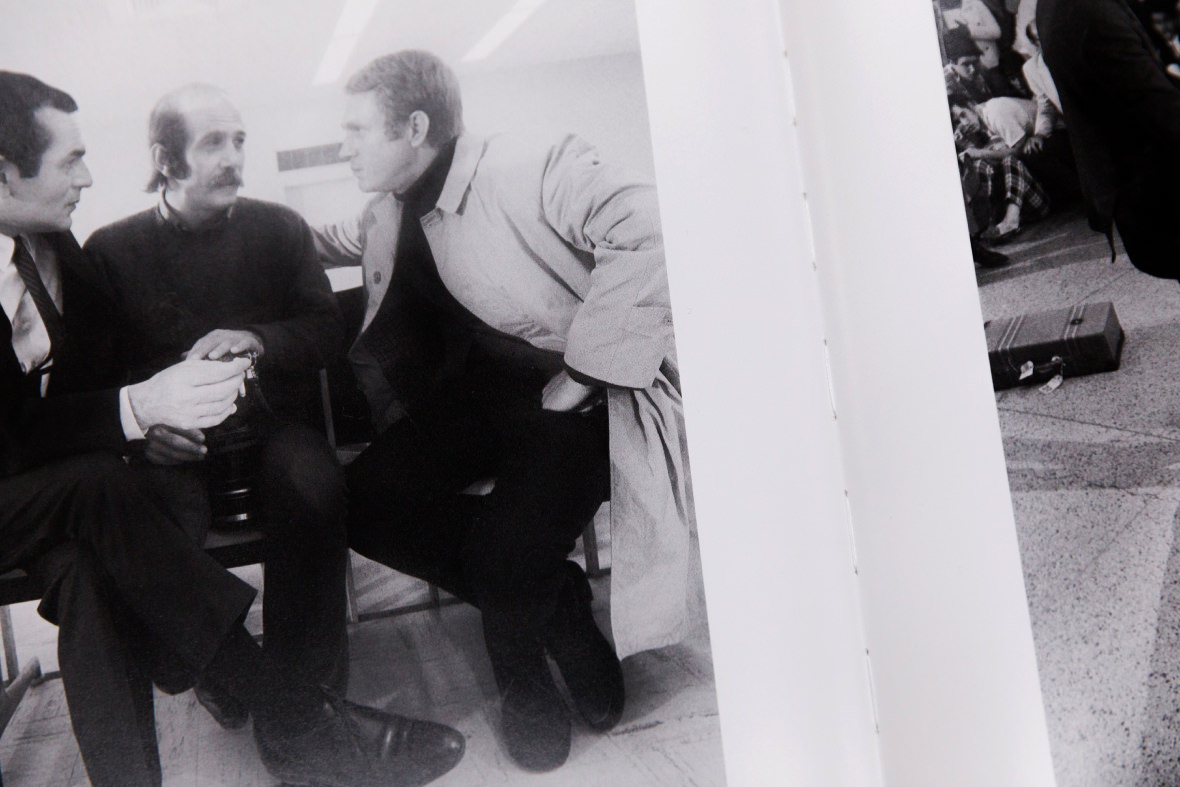
I’ve learned from McQueen
how stylish it is to wear the coat roughly.
“KAPTAIN SUNSHINE has made balmacaans since its debut in 2013, using the shapes and pocket designs of vintage pieces as references. As we design it to be packable for traveling, our balmacaans are called ‘Traveler Coats’ and made with wrinkle-resistant fabrics or textiles that wrinkle nicely with use. Although the fundamental design has not altered since our very first model, I’ve added some small changes to things like the measurements according to the trend and my personal preference of the time. While we often use Melton or flannel fabric for our winter collection, our balmacaans for the spring collection are made mostly with cotton gaberdine or shirt fabric. The design is definitely inspired by vintage pieces, but I care more about the style and atmosphere than about the details.”
“Because I love the way Steve McQueen wears his coat in Bullitt, a balmacaan is about McQueen for me personally. His style made me realized that a man casually clad in a big coat looks sophisticated. Coats are usually made in larger sizes to cover all the clothes underneath, but the design has sometimes changed according to trends and we saw so many slimmer ones a few years ago. In my opinion, however, the traditional voluminous coats look best regardless of the sizes of clothes worn under those.”
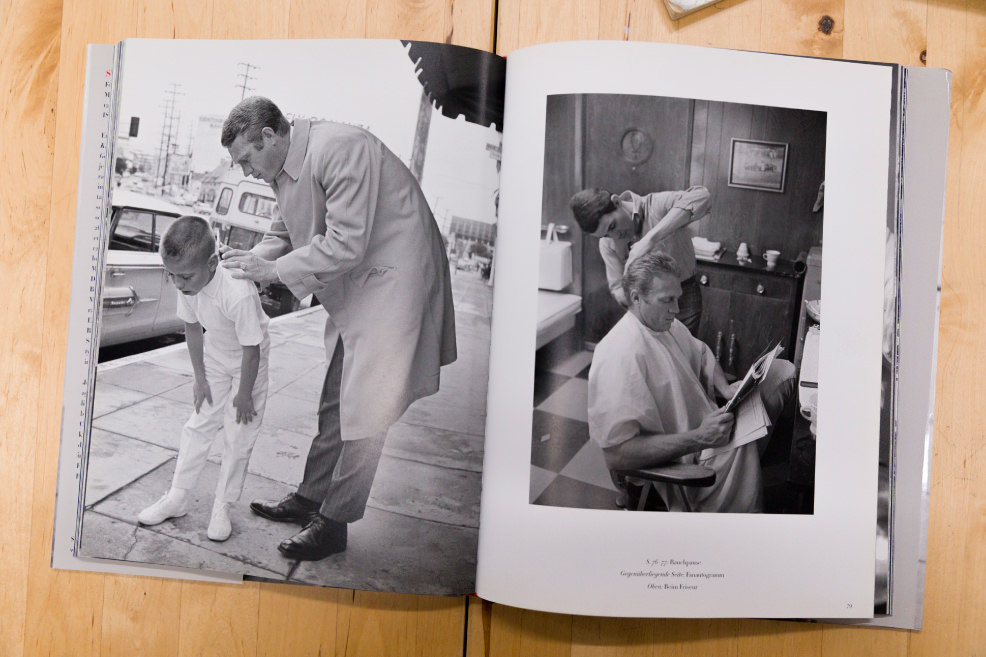
From a photo book of Steve McQueen
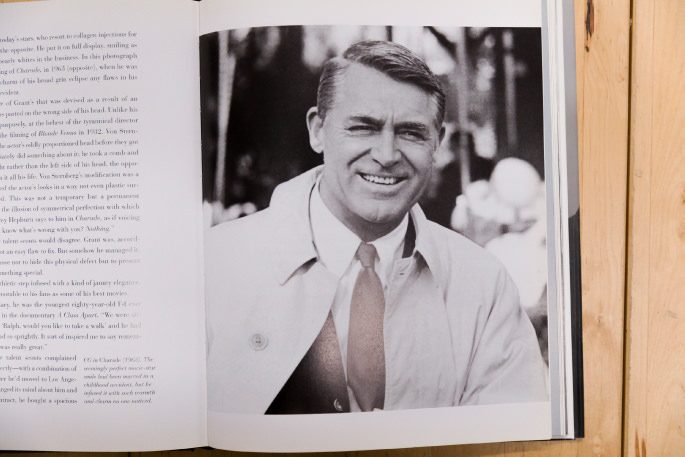
Cary Grant looks classic yet seductive in his balmacaan.
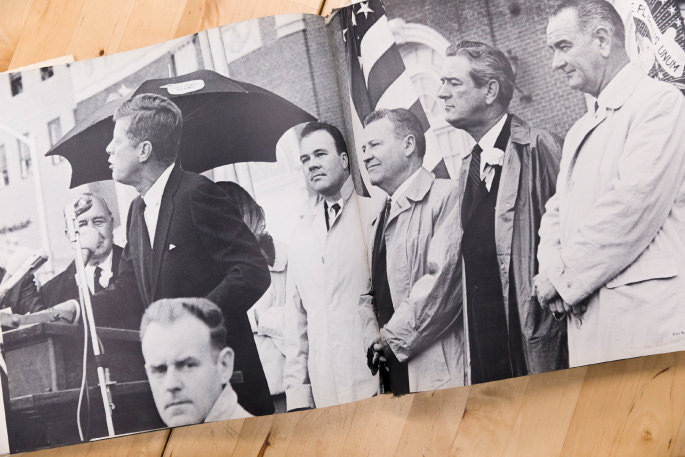
“Our exclusive model designed in collaboration with BEAMS+ is characterized by its classical Harris Tweed-like slightly fluffy alpaca blend wool fabric with soft and light texture. This fabric was initially made to use for our own products, but I thought it might match well with the concept of BEAMS+ even before they asked me to collaborate.”

- Edit : Masayuki Ozawa
- Writing : Naoyuki Ikura
- Translation: Aya takatsu
- Photography : Shunsuke Shiga
- Illustration : Naoki Shoji
- Design and Development : maam.inc
Color : GREY , BEIGE /
Size : S , M , L , XL / Price : ¥70,000(+tax)

The products shown in this article are
available at BEAMS PLUS stores.
BEAMS PLUS YURAKUCHO / BEAMS MEN SHIBUYA /
BEAMS TSUJIDO / BEAMS UMEDA / BEAMS KOBE
vol.15
American Suit
Hisao Saito
from TUBEvol.14
BACKPACK
Takao Fujimoto
from STANDARD SUPPLYvol.13
5 Pocket Denim Pants
Kenichi & Koji Shiotani
from WAREHOUSEvol.12
Luggage Wear
Setsumasa Kobayashi
from .....RESEARCHvol.11
Leather Wallet
Daisuke Motoike
from MOTOvol.10
Fatigue Pants
Daiki Suzuki
from ENGINEERED GARMENTSvol.09
Tie
Kenichi Kusano
from KENNETH FIELDvol.08
Tote Bag
Shinshu Kosuzume
from BRIEFINGvol.07
Coverall Jacket
Takeshi Ohfuchi
from Post O'Allsvol.06
Balmacaan Coat
Shinsuke Kojima
from KAPTAIN SUNSHINEvol.05
Western Shirt
Yutaka Goto
from REMI RELIEFvol.04
M-51
Kimitoshi Chida
from sage de cretvol.03
Sweat
Satoshi Suzuki
from LOOPWHEELERvol.02
Open Collar Shirt
Hirofumi Yamashita
from MOJITOvol.01
Blazer
Jack Carlson
from ROWING BLAZERS





































